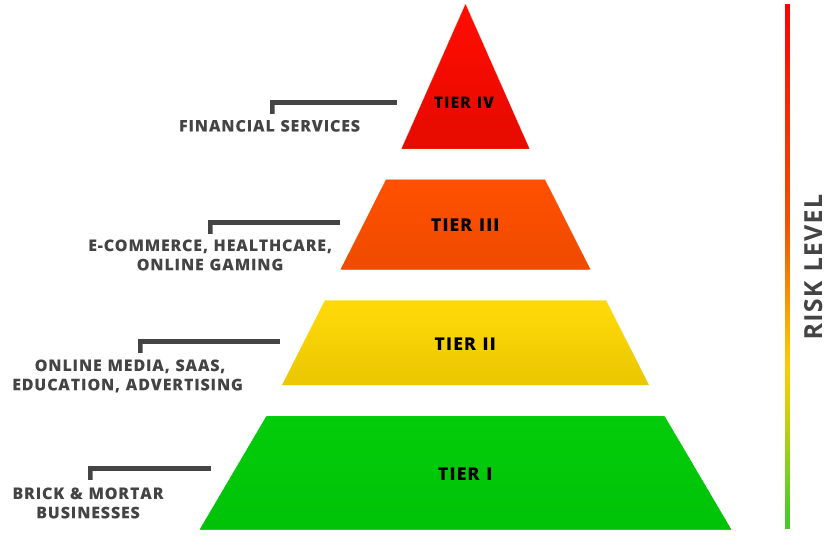Article: How High Is the Risk of a DDoS Attack for Your Industry?
Any business can experience a DDoS attack. However, some industries are at higher risk than others. While industry is only one aspect of a business' overall risk profile, it plays an important role.
Determining a business' risk level is important when creating a DDoS attack strategy. The overall business risk will often dictate what technology is deployed, the function of incident response processes, and the structure of incident response teams. To help, NimbusDDOS created a tiered system based on industry and DDoS attack risk.

We will discuss the different levels. Where does your business fit?
Tier 1: Brick and Mortar (Lowest Risk)
Small brick and mortar businesses generally have a low risk of DDoS attacks, as their Internet presence and software generally plays a smaller role in their business model.
DDoS attacks involve overloading a companies Internet sites to make them unusable. This means that brick and mortar businesses that generate the majority of their revenue offline, are at less risk than their online counterparts. However, critical online components of their business could still be impacted. Although at lower-risk, a simple tweet from a business owner may be enough to generate public outrage and a DDoS attack.
Tier 2: Online Media, SaaS, Education
These industries are at a somewhat higher level of risk for a DDoS attack. As online media, SaaS and education depend more heavily on Internet presence and software to provide their services, a DDoS attack can have a more dramatic effect. In these industries revenue is often tied directly to their online presence, so an outage caused by a DDoS attack will disrupt their customers leading to customer attrition and lost revenue.
However these industries are not at the highest risk, as they do not perform real-time financial transactions or deal with highly sensitive data as the industries in Tier 3+.
Tier 3: Ecommerce, Healthcare, Online Gaming
Tier 3 industries are heavily dependent on their Internet presence and software for revenue, or handle extremely sensitive data.
Ecommerce requires software to be running smoothly for payments to process. An overload of requests in an online store could prevent customers from purchasing or even viewing products. This impact would cause a direct revenue loss for each minute of downtime caused by the DDoS attack.
Healthcare depends on software for scheduling patients, payment processing, medical records and charting. An interruption could be disastrous.
Online gaming is also sensitive to DDoS attack. Similar to ecommerce, gaming platforms often have a direct link to revenue generation. Additionally, an online game is only available online, so a DDoS attack effectively closes the business completely.
Tier 4: Financial (Highest Risk)
The industry with the highest risk of DDoS attacks is financial services. DDoS attacks slow financial websites so clients cannot access their accounts. Further, the attack could be a strategy to distract from other malicious activities, such as compromising or stealing highly sensitive personal data.
Consequences of a DDoS attack on a financial institution could result in lost revenue, reputation damage and loss of clients. You can learn more about the risks and consequences of DDoS attacks here.
Finding Your Risk Level
Have you classified yourself in one of these tiers? What is your risk level of DDoS attack? Remember that industry is only one of several factors that play a role in overall business risk of DDoS attack.
NimbusDDOS specializes in assessing DDoS risk levels and testing defense strategies. A consultation can help you be confident in the face of DDoS attacks, no matter the risk level of your industry. Contact us for a consultation.